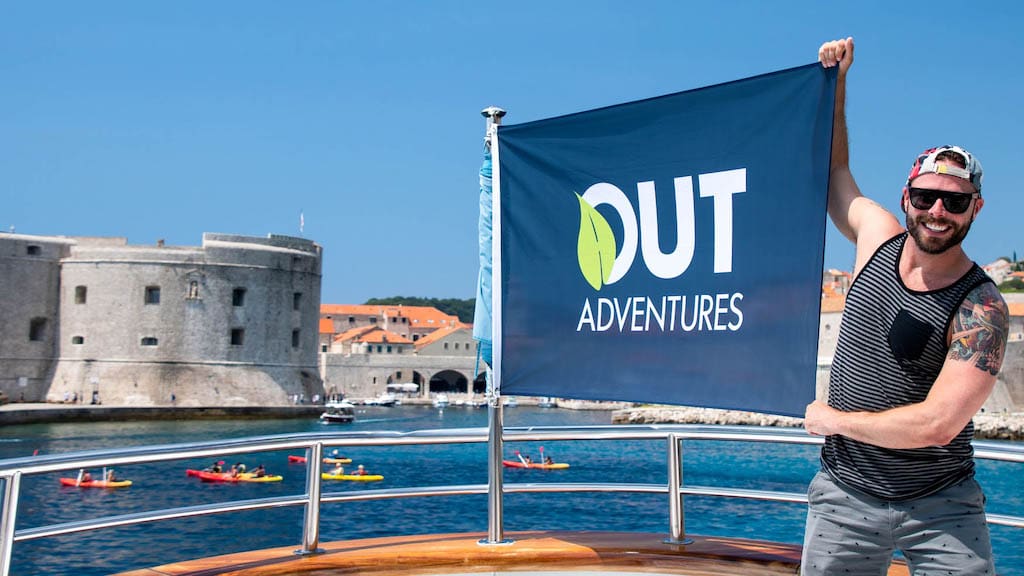Since launching Out Adventures 12 years ago, Rob has travelled to some 60+ countries around the globe. During this time he has experienced acceptance in unexpected locales, and at other times, he has felt less-than-welcomed as a cis gay man. Given his ample travel experience, we put one of the most frequent questions we receive before him: What are the most gay friendly countries in the world today? See his countdown below.
A note on the phrase ‘gay friendly’.
Throughout this post we’ll primarily use the term ‘gay friendly’ as it’s the more widely recognized phrase. However, Rob emphasizes that he prefers the term LGBTQ welcoming, as it reflects a more deliberate step on the country’s part to be an authentic ally to our entire community. Rather than, say, a country that will outwardly flaunt LGBTQ legislation with the sole intention of reaching into our pockets. The difference is nuanced but important.
10. Argentina

Why Rob ranked Argentina as a gay friendly country.
Rob’s first pick, and the only South American country to breach his top ten, is aristocratic Argentina. As Rob explains: in the early 80s, human rights issues pushed Argentina to make the significant transition to democracy. With a newfound ‘people first’ approach to politics, Argentina swiftly ushered in constitutional rights for queer people. By positioning LGBTQ rights as human rights, advocates also won over the politically-minded citizens. Today, the fruits of their advocacy can be seen in public opinion polls that show over three-quarters of Argentineans accept homosexuality—the highest rate in any Latin American country.
LGBTQ rights & public opinion in Argentina.
On July 15, 2010 Argentina made LGBTQ headlines by becoming the first Latin American country to legalize same-sex marriage. But while the decision is historic, it’s not the country’s most prominent claim to LGBTQ-fame. Argentina’s most noteworthy rights are actually its trans rights. Since the Gender Identity Law passed in 2012, Argentinean trans people have had the right to change genders without surgery, hormone therapy or even psychiatric evaluation. But should a trans person wish to undergo hormone therapy or even gender reassignment surgery, their medical bills would be covered by their public or private health care plan. The fact that the country also opened Latin America’s first trans community centre is really just a nice touch.
Argentina’s gay scene.
Buenos Aires is the LGBTQ capital of not just Argentina, but all of Latin America. It has a robust LGBTQ scene with many bars and clubs centred around the Palermo neighbourhood. Marcha del Orgullo (AKA Buenos Aires Gay Pride) is a revelrous annual event held in November. Other exciting LGBTQ festivals include Asterisco Film Festival and Queer Tango Festival.
Outside of Buenos Aires, Rosario and Mendoza have vibrant LGBTQ scenes. Mendoza has become especially popular with LGBTQ jet setters, thanks to its welcoming culture, surplus of wine and ‘Vendimia para Todxs‘ (Vendimia for Everyone). This popular week-long festival directly succeeds the annual grape harvest, and culminates with one of the continent’s biggest drag pageants.
9. Thailand

Why Rob ranked Thailand as a gay friendly country.
The Land of Smiles exudes a welcoming aura, with a ‘no request is too large, and no person is too small’ approach to customer service. Which is perhaps why we as LGBTQ travellers feel so comfortable in the Southeast Asian destination. But beyond having the world’s best customer service standards, Thailand also has one of Asia’s brashest LGBTQ scenes. Thailand’s capital, Bangkok, has actually been named the second most gay friendly city in Asia next to Tel Aviv, Israel.
LGBTQ rights & public opinion in Thailand.
We need to address the elephant in the room: LGBTQ visitors and LGBTQ locals are treated very differently in Thailand. For example, Thailand actively markets itself as an excellent country to host a same-sex destination wedding (See the Go Thai Be Free video), but at the same time, local same-sex couples do not enjoy the same legal rights as heterosexual married couples.
However, as Rob points out, while Thailand has been slower to instate the full legal LGBTQ dossier other countries on this list have, it should be recognized as a trailblazer in Asia. It has a pretty impressive list of anti-discrimination laws protecting individuals from employment-discrimination and housing-discrimination.
Also, it’s worth noting public opinion for lesbian, gay and bisexual people is very high in Thailand. In 2015, 89% of Thai people said they’d accept a homosexual colleague and 80% said they’d accept a homosexual family member.
Thailand’s gay scene.
Thailand has the largest and most open gay scene throughout all of Asia. In Bangkok, Silom 2 is the famously audacious strip where LGBTQ locals and foreigners alike go to let off steam. For a particularly wild experience, plan your time in Bangkok to align with Songkran Water Festival every April. G Circuit takes place annually during Songkran and is recognized as Asia’s wildest circuit party—and wettest thanks to the surplus of water guns and sweat.
Outside of Bangkok, travellers will feel welcomed and celebrated in Chiang Mai (stop by the Chiang Mai Cabaret), Phuket and throughout the islands.
8. Finland

Why Rob ranked Finland as a gay friendly country.
To no one’s surprise, Finland is the first of three Scandinavian countries to top Rob’s list. And for good reason. First and foremost, the Finnish have a lovely laissez-faire attitude towards us homosexuals. Perhaps this ingrained acceptance is the result of early advocacy by the King of Homoeroticism himself, Tom of Finland. Or perhaps it’s because of strong allyship in every level of government. In fact, Prime Minister Sanna Marin credits her lesbian mothers for her political values. On her website she states, “For me, human rights and equality of people have never been questions of opinion but the basis of my moral conception.” Either way, Finland is a fundamentally gay friendly country, says Rob.
LGBTQ rights & public opinion in Finland.
As already mentioned, Finland enjoys allyship in the highest office in the country. Prime Minister Sanna Marin is Finland’s youthful leader (she was a bright-eyed 34-year-old when she took office) who grew up under the guardianship of her lesbian mothers. It’s worth mentioning, Marin leads a coalition government led exclusively by women, likely the only country in the world to enjoy this feminist slant—at least according to our quick Google search. Thanks to this liberal-leaning government and a vocal LGBTQ community, Finland’s queer people enjoy equal rights on almost every major matter. Oh. And regarding public opinion: 80% of Finns fully support the rights and freedoms of us gay, bi or otherwise inclined individuals.
Finland’s gay scene.
Helsinki is the country’s capital and the epicentre of its queer scene. It’s here you’ll find the legendary Keltainen Ruusu sex store and cinema as well as a slew of LGBTQ bars and clubs. If you’re interested in a uniquely queer stay, book the Tom of Finland Experience at Klaus K hotel (*Ahem* which we’ve reserved for our upcoming Finland: Winter Expedition *Ahem*). By doing so, the hotel will fit your bed with Tom of Finland screen printed sheets and guarantee you a free spot on the popular Tom of Finland walking tour—you’ll visit the artist’s old cruising spots, favourite watering holes, and galleries where his work still hangs today.
On another note, saunas are extremely important in Finnish culture. While all genders enjoy saunas in this snowy country, gay-only saunas do exist in Helsinki and are definitely a must-visit.
Finally, Helsinki Pride is the country’s most popular annual LGBTQ event, taking place on the last week of June.
7. Portugal
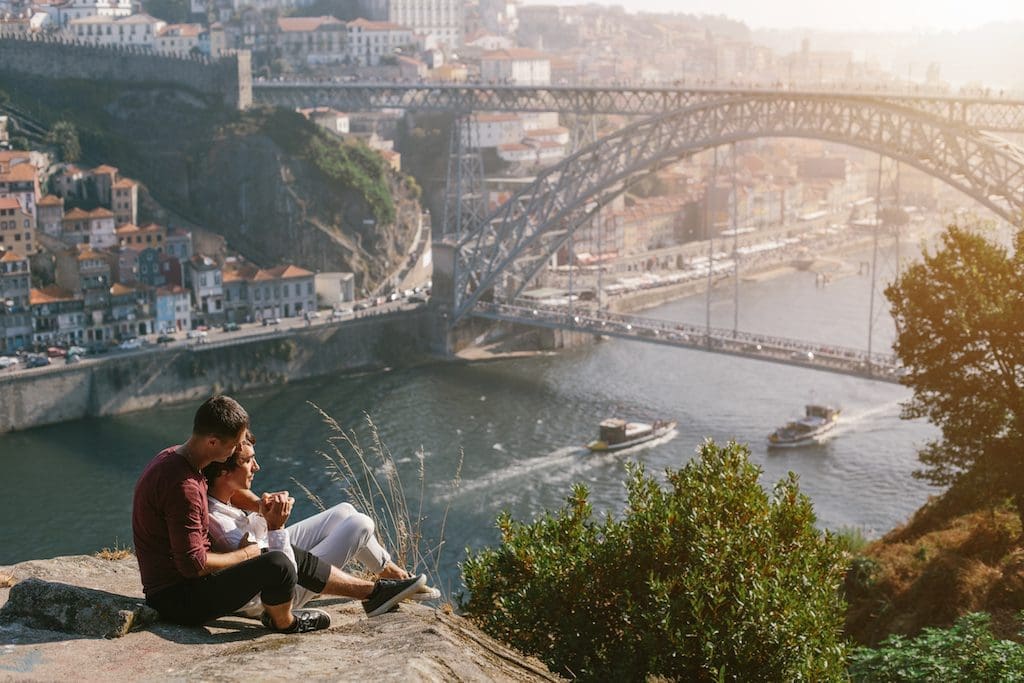
Why Rob ranked Portugal as a gay friendly country.
As a tourist, few countries feel as nonchalant about LGBTQ PDA as Portugal. The small Western European destination is famously liberal on everything from same-sex marriage to gender identity (surgery is not required). Even in the barely-populated Azores Islands where Rob visited in 2018, he reported feeling completely comfortable being himself the entire time.
LGBTQ rights & public opinion in Portugal.
Like almost every country on this list, same-sex marriage was enacted early on, and with it came a swift suite of bills and amendments resulting in Portugal being named one of the best countries in the world for queer people to live. And it should be noted that alongside Spain, this is the only other country that allows ‘men who have sex with men’ to donate blood without a celibacy period on this list. Finally, in the 2019 Eurobarometer, 80% of Portuguese people said they believed lesbian, gay and bisexual people should have the same rights as straight people.
Portugal’s gay scene.
Lisbon and Porto sport the largest LGBTQ scenes in the country, with smaller scenes throughout. In Lisbon, head to Rua Barroca for the largest concentration of LGBTQ bars. But don’t constrain yourself to just this strip as many of the city’s best joints are sprinkled elsewhere. Likewise, Porto’s gay bars, clubs and parties pepper the entire map. It should be noted that drinking outdoors is completely legal, and clubs don’t have to shutter their doors at any specific time—likely two reasons Portugal has become a travel hot spot among more party-oriented homosexuals.
In terms of annual events, Lisbon and Porto boldly celebrate Pride in June and July respectively. Meanwhile, Queer Lisboa is widely considered one of the most important and provoking alternative film festivals across Europe.
6. Norway

Why Rob ranked Norway as a gay friendly country.
Like its Scandinavian neighbours, Norway is a widely recognized LGBTQ friendly country. In fact, it was one of the first countries in the world to offer equal rights to everyone, no matter their sexual orientation or gender identity.
On his own hiking adventure in Norway, Rob noted how friendly and accepting Norwegians are, even in its scarcely populated mountainous countryside. In fact, the country’s official trekking association (notably presided over by a self-identifying cis gay man) has launched a rainbow Pride beanie so LGBTQ hikers can identify one-another on the trails. The idea piggybacked off of last year’s green Singles beanie, that helped hikers hookup—romantically and physically.
LGBTQ rights & public opinion in Norway.
As mentioned, Norway offers LGBTQ people completely equal rights including church marriages. It also puts a heavy foot down on discrimination, blatantly outlawing any form of homophobia in housing and workplaces. In fact, Norway currently ranks 5th on the Rainbow Europe country ranking scale which has six weighted factors and assesses 49 countries.
One final unique feather in Norway’s hat, was it was the first country in the world to offer PrEP for free as part of its global health strategy.
Norway’s gay scene.
The LGBTQ scene is at its most vibrant in the country’s three largest cities: Oslo, Bergen and Trondheim. Each city has an annual Pride festival, with Oslo Pride lauded as one of Europe’s best. And like other mountainous countries on this list, a growing number of LGBTQ ski weeks and winter Prides are popping up, most notably Skeive ski in Hemsedal.
Speaking of winter, if you happen to be in Oslo leading up to Christmas, according to visitnorway.com, “Oslo fagottkor was named the world’s best gay choir during an unofficial world championship in Copenhagen in 2009 (their traditional Christmas concerts are usually very entertaining).”
5. Malta
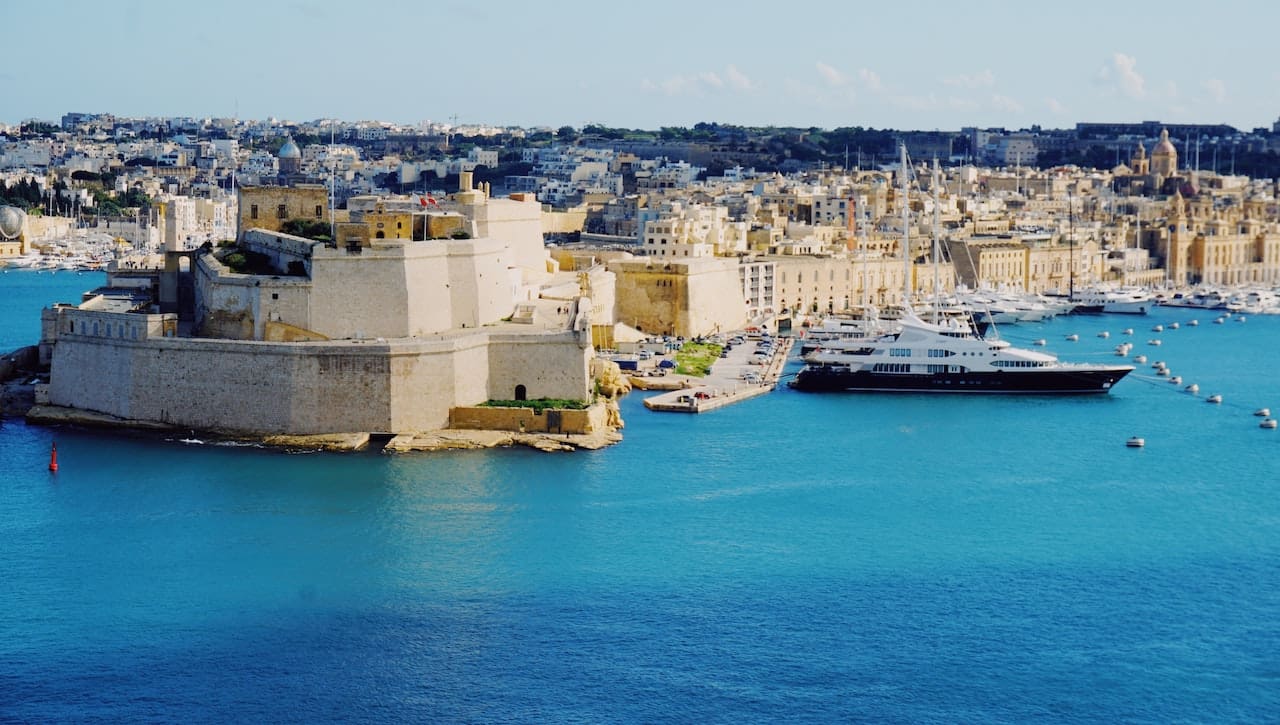
Why Rob ranked Malta as a gay friendly country.
With a final score of 89% in 2020, Malta continues its reign over the Rainbow Europe IGLA index. If that doesn’t sound THAT impressive, consider that second place went to Belgium with a final score of 73%—a 16% difference!
LGBTQ rights & public opinion in Malta.
Perhaps, most shocking about Malta’s rise to become a leader in LGBTQ rights is how recently the country saw the light. Miniscule Malta is staunchly Roman Catholic, and only began allowing legal divorces in 2011. Abortion is still a criminal act. But in 2014, Marie Louise Coleiro Preca was elected president and immediately ushered in powerful pro-LGBTQ legislation, most notably criminalizing conversion therapy—emphasis on ‘criminalizing’. Preca’s own Civil Liberties Minister, Helena Dalli, also enjoy’s substantial acclaim for overseeing the country’s progressive trans-rights bills. With these leaders in place, Maltese people immediately fell in line and many local queer people describe the country’s queer awakening as “over night”. Back in 2006, a Eurobarometer poll found just 18% of the population agreed with same-sex marriage, where as in 2019 67% agreed—this represents the sharpest increase in any country. Overall, Malta is on track to becoming the most LGBTQ-progressive country in the world. And we couldn’t be happier.
Malta’s gay scene.
Malta is a tiny country, with a total population barely surpassing 400k. Because of its size, the local scene is equally small. However, a selection of popular gay bars exist in Valletta as well as other touristy destinations. Malta Pride is one of the best late-summer Pride’s in Europe, annually celebrated mid-September.
4. Spain

Why Rob ranked Spain as a gay friendly country.
“Why did you put Spain so high on the list?” I asked Rob in a perfunctory manner. “Are you kidding?” was his only response. Truth be told, I was suddenly pink in the cheeks about my embarrassing question. If anything, I should have been asking why he didn’t rank Spain even higher. From the LGBTQ mecca of Madrid, to bohemian Barcelona, and even the famously flamboyant Stiges, Spain easily tops almost every LGBTQ-friendly list.
LGBTQ rights & public opinion in Spain.
In 2005, Spain became one of the first countries in the world to recognize same-sex marriage. The bill was widely welcomed throughout the country, despite strong opposition from the Catholic Church (a powerful organization in Spain, even today). Even minor LGBTQ-legislation such as the right of gay men to donate blood is legal in Spain—it’s worth noting, the top three countries on this list still don’t allow “men who have sex with men,” from donating without significant celibacy periods.
Perhaps most noteworthy is the widespread acceptance of homosexuality in Spain. In a spring 2019 PEW Research survey, 89% of Spaniards said “homosexuality should be accepted by society” while just 10% said it should not.
Spain’s gay scene.
Where to even begin!?
Madrid’s Chueca gayborhood is as large as they get, with an annual Pride Parade that spills across the entire city and seems to last weeks. Madrid is also home to one of the world’s premiere LGBTQ film festivals, Les Gai Cine Mad. Finally, in 2017, it became the third city to ever host World Pride.
Barcelona is also beloved by the gays. From its two official LGBTQ beaches (San Sebastian and Mar Bella) to its two LGBTQ districts (L’Eixample and Gràcia), there’s plenty to do anytime of the year. Even the world’s only “hetero-friendly” hotel chain, Axel Hotels, has opened up a slick location downtown Barcelona.
Finally, we’d be remiss without giving Sitges a special shout-out. This hot spot has long held the title of Europe’s gay refuge. Especially among the circuit queens interested in Carnaval‘s notorious all-nighters.
3. Iceland
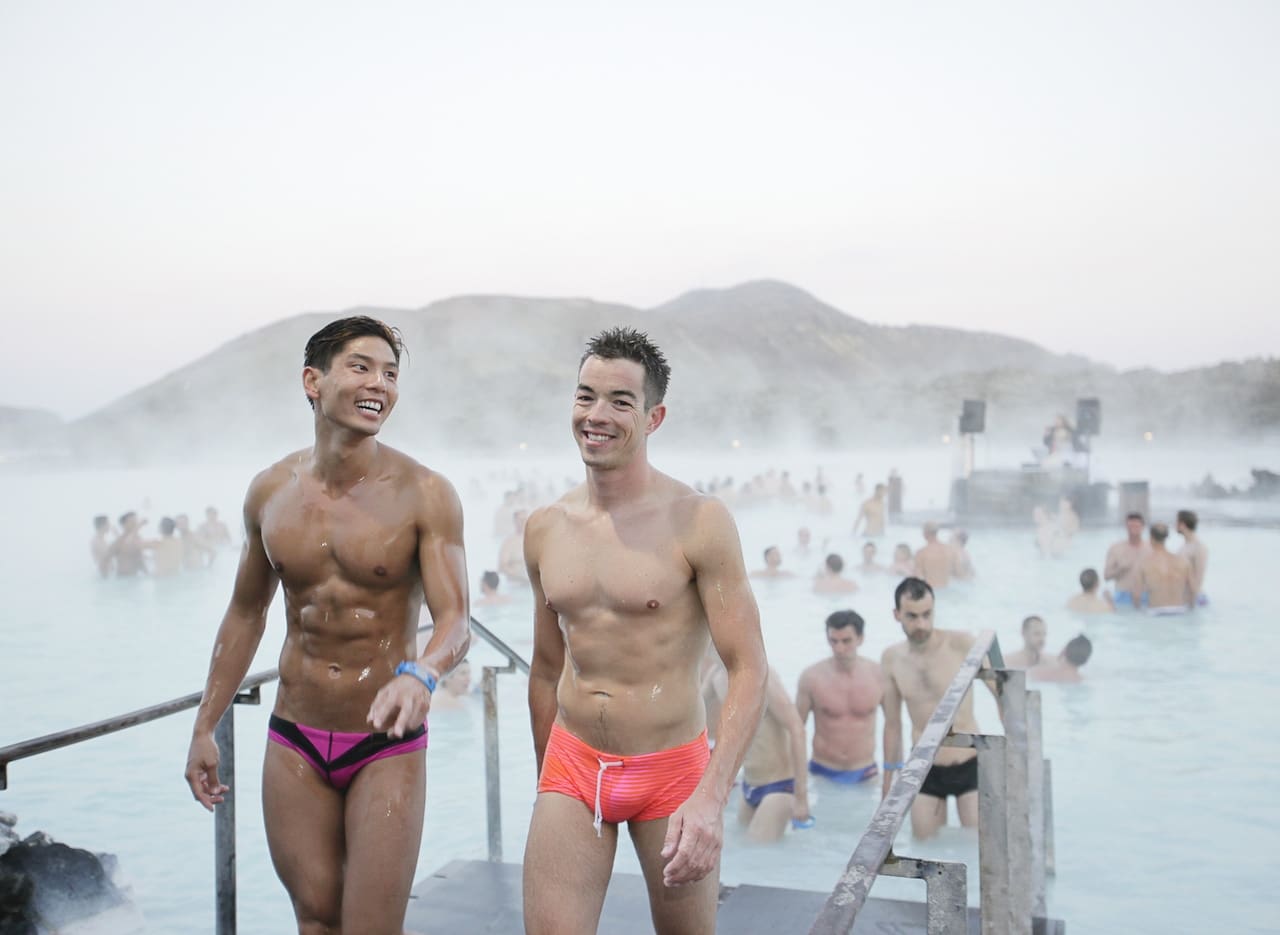
Why Rob ranked Iceland as a gay friendly country.
Iceland, more than any other country on this list, has an especially long history celebrating lesbian-identifying women, says Rob. In 2009, Jóhanna Sigurðardóttir became the first openly-serving LGBTQ head of state in the entire world. But beyond politics, a simple Google Search will bring up a plethora of LGBTQ owned and operated tourism businesses, not least of which being Rob’s friends at Pink Iceland. Finally, Iceland proudly hosts one of “the biggest little Prides in the world.” Reykjavik Pride is annually attended by more than 100k attendees—a striking number considering the island-nation has a population of just 350k.
LGBTQ rights & public opinion in Iceland.
Long before almost any other country in the world was even contemplating overturning anti-LGBTQ legislation, Iceland repealed its law criminalizing homosexual acts in 1940. Since that day, Iceland has steadily enacted anti-discrimination laws, fair adoption laws, equal ages of consent etc. And on June 11, 2010, Icelandic Parliament unanimously amended the country’s marriage law to define marriage as between two “individuals” rather than “a man and a woman”. I repeat: U N A N I M O U S L Y.
Iceland’s gay scene.
Reykjavik reigns queen supreme when it comes to The Land of Fire & Ice’s gay scene. As previously mentioned, the quirky capital hosts one of the world’s biggest little Prides, attracting almost a third of the country’s entire population. Regarding LGBTQ spaces, Kiki Bar has long been recognized as the city’s only LGBTQ bar.
Other lesser-known LGBTQ events and activities are also gaining prominence. In Reykjavik, the ladies behind Pink Iceland have invested heavily in Rainbow Reykjavik, a winter counterpart to Reykjavik Pride. Lady Brewery is the only women-owned and operated craft brewery in the country. Finally, Literary Reykjavik offers a Culture Walk app with a Queer Literature feature perfect for a self-guided LGBTQ walking tour.
2. New Zealand
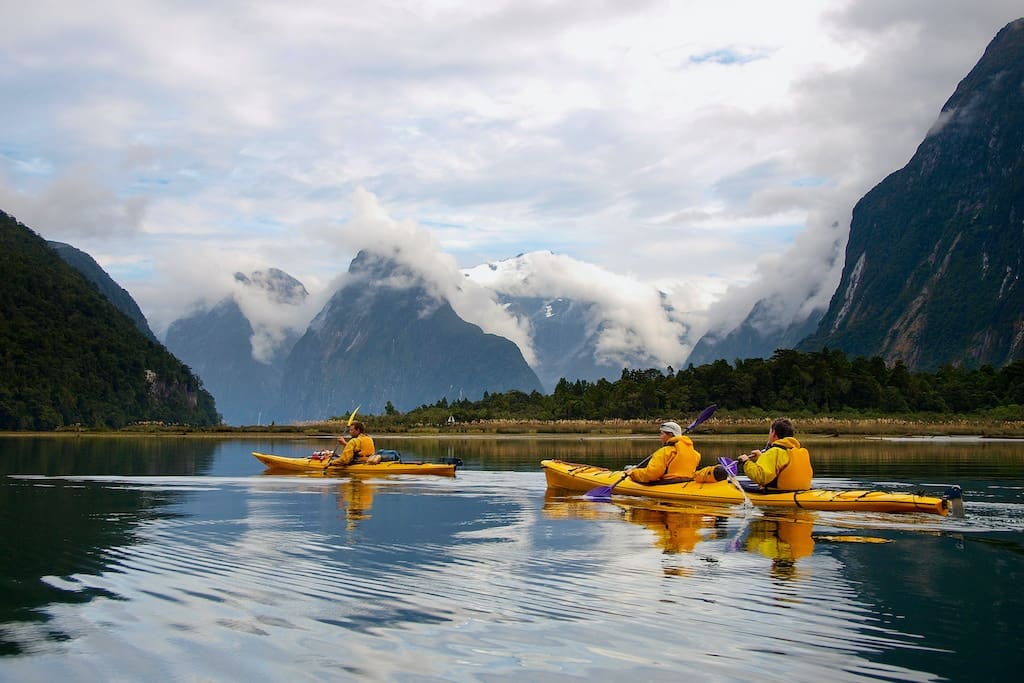
Why Rob ranked New Zealand as a gay friendly country.
Fun fact: Back in 1998, New Zealand was the first country in the world to recognize a gay friendly travel certification for B&Bs, hotels, restaurants and so forth. While queer jet setters overwhelming report feeling accepted and safe in almost any Kiwi accommodation today (officially certified or not), the organization does still exist under its new name Rainbow Tourism Accreditation (RTA).
Beyond being ahead of the curve on LGBTQ travel, Kiwis are famously accepting of all sexual orientations and gender expressions—even in many rural regions. It is unlikely small gestures like holding your same-sex partner’s hand in public or minor PDA would cause a Kiwi to bat an eye.
LGBTQ rights & public opinion in New Zealand.
Gay Marriage? Check. Employment and housing protections? Check. The right to serve openly in the military, change gender and/or adopt as an LGBTQ couple? Check, check and check.
New Zealand not only enforces the usual grab bag of LGBTQ progressive legislation, but it celebrates it. In 2018 Jacinda Ardern—an outspoken ally—became New Zealand’s first prime minister to march in a Pride parade. She was accompanied by her openly-gay finance minister, Grant Robertson, and openly-lesbian MP Louisa Wall. When asked why Ardern revoked her Mormon upbringing, she boldly stated, “Because how could I subscribe to a religion that just didn’t account for my gay friends?”
New Zealand’s gay scene.
New Zealand hosts three high-profile annual LGBTQ events: Auckland Pride Festival, Big Gay Out and Queenstown’s Gay Ski Week. It should be mentioned that pocket-Prides exist in most medium-sized cities in the country.
1. Canada

Why Rob ranked Canada as a gay friendly country.
Rob’s home and native land soared to the top of his list as the most gay friendly country in the world. And before you even ask, no his ranking has nothing to do with his national pride. Rather, the physically massive country’s impressive investment in LGBTQ tourism, progressive LGBTQ legislation, wide-spread public acceptance, and nearly unmatched queer revelry are why he awarded it the top slot.
LGBTQ rights & public opinion in Canada.
The Great White North has been celebrating its queerness for decades as one of the first countries to legalize same-sex marriage, put forward strong anti-discrimination legislation and recognize transgender rights—in fact, Canada is one of the few countries an individual can change their gender without gender reassignment surgery.
Perhaps best of all is the widespread acceptance among all Canucks for the LGBTQ community. In a 2019 poll by the Government of Canada, residents were asked if they would be “comfortable” if a neighbour or close relation identified as LGBT. We’re proud to report 91.8% of Canadians responded they’d be comfortable with a Lesbian, Gay or Bisexual neighbour(!) and 87.6% said they’d be comfortable with a Transgender neighbour.
Canada’s gay scene.
Canada’s fabulous LGBTQ scene is loud and proud. While a large majority of the country’s LGBTQ residents live in the three largest cities (Toronto, Montreal & Vancouver), gay villages can actually be found in almost all decently sized destinations. Even a number of rural regions such as the province of Ontario’s Prince Edward County have growing queer communities worth checking out.
In terms of Pride festivals and major LGBTQ events, the largest include Toronto Pride, Fierté Montréal and Vancouver Pride. During Canada’s snowy season, a rising number of winter Prides are gaining prominence including Whistler Pride & Ski Festival, Tremblant Gay Ski Week and Blue Mountain Rainbow Weekend. Meanwhile, unique queer events such as LGBTQ film festivals, ‘Drive In Drag’ shows, and scenic Rainbow train rides are common. Even mainstream celebrations such as the Calgary Stampede have queer-focused programming, ensuring all attendees feel welcomed and included.
Photo Credits
Header image courtesy of Nathan Lepp. All other photo credits from the top-down: Shutterstock, Jaturaporn Tepkom, Shutterstock x 2, Hvitserk, Variety Cruises, Shutterstock, Pink Iceland, Shutterstock, Vancouver Pride.
Featured Posts
Out Adventures Gay Travel Podcast cohosts Peter and Rob debate the ethics surrounding LGBT travel in countries where homosexuality is illegal. Read More
After ten years running the world's premiere gay tour agency, Out Adventures, Robert Sharp shares 10 insights into entrepreneurship and gay travel. Read More
Seven LGBT experiences available on Out Adventures' international gay tours. Read More
The Tourism Board of Thailand's new LGBT campaign isn't just an example of sticky fingers. Here's why the country is a true LGBT ally. Read More
As Out Adventures prepares to lead a group of gays on a journey from Calgary to Vancouver, let’s look at how the Canadian apology impacts our home and native land. Read More
